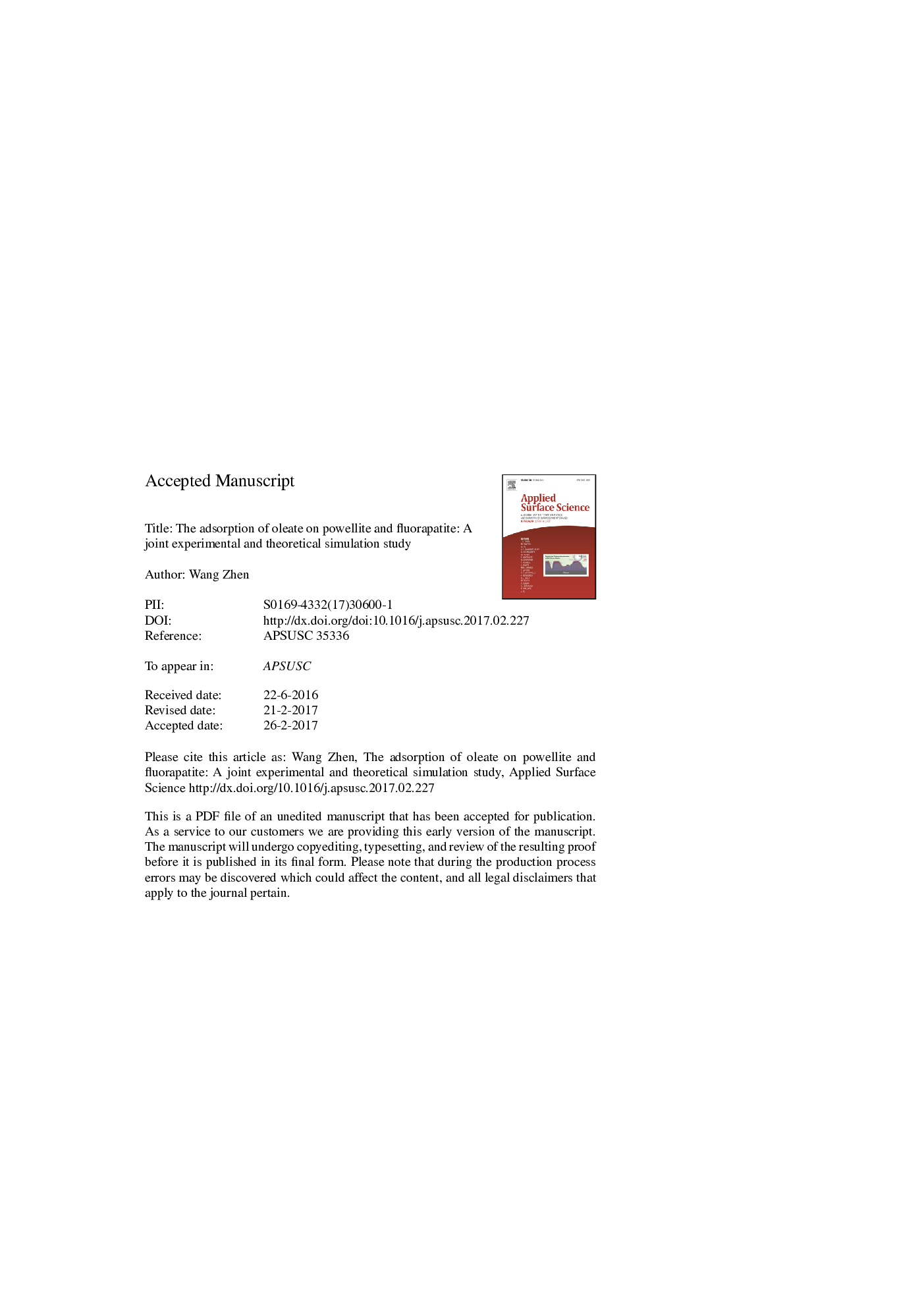| Article ID | Journal | Published Year | Pages | File Type |
|---|---|---|---|---|
| 5350689 | Applied Surface Science | 2017 | 18 Pages |
Abstract
Flotation and adsorption performance of sodium oleate(NaOl)on powellite and fluorapatite were investigated in this work through micro-flotation tests, work of adhesion calculations, molecular dynamics simulation, micro-topography studies and FTIR measurements. The micro-flotation results show a similar flotation behaviors of powellite and fluorapatite under alkaline conditions, but a considerable difference in mineral recoveries in the pH range 2-7, which demonstrates the possibilities for separating powillite from fluorapatite under acidic conditions. The great difference in mineral recovery displays a good accordance with the obvious difference in the work of adhesion of powellite and fluorapatite at NaOl dosage range of 40-80Â mg/L, obtained from flotation and contact angle measurements, respectively. The more negative interaction energy (ÎE) between NaOl and powellite/water interface from molecular dynamics simulation reveals a more easily adsorption of NaOl onto powellite than onto fluorapatite, which excellently matches with the results of flotation and work of adhesion. The results of micro-topography study shows that the adsorption of NaOl on powellite is mainly ascribed to the chemisorption of oleate ions with Ca2+ on powellite lattice or the precipitation of calcium dioleate agglomerates on powellite surface when it was in the solution without or with Ca2+, respectively. The FTIR measurements further confirm the chemisorption of oleate ions with Ca2+ active sites on powellite surface.
Related Topics
Physical Sciences and Engineering
Chemistry
Physical and Theoretical Chemistry
Authors
Wang Zhen,
